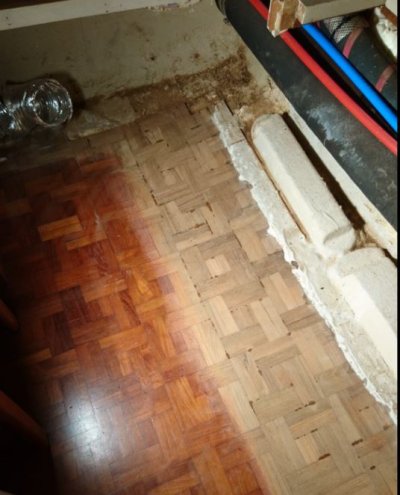Capt. Sea Fever
Veteran Member
- Joined
- Mar 18, 2017
- Messages
- 40
- Location
- USA
- Vessel Name
- Sea Fever
- Vessel Make
- Grand Banks 49 Classic
Recently bought a 1983 GB 49 Classic.
I’ve noticed a slowly spreading area of whiteness developing in the Aft. Saloon’s parquet teak flooring (pic).
I’ve checked for dampness..none. Leaks behind cabinets...none.
What is your opinion as to what th8s might be, and can I lightly sand it, restain and poly?
Thanks!
Capt.Sea Fever
I’ve noticed a slowly spreading area of whiteness developing in the Aft. Saloon’s parquet teak flooring (pic).
I’ve checked for dampness..none. Leaks behind cabinets...none.
What is your opinion as to what th8s might be, and can I lightly sand it, restain and poly?
Thanks!
Capt.Sea Fever


 .
.
